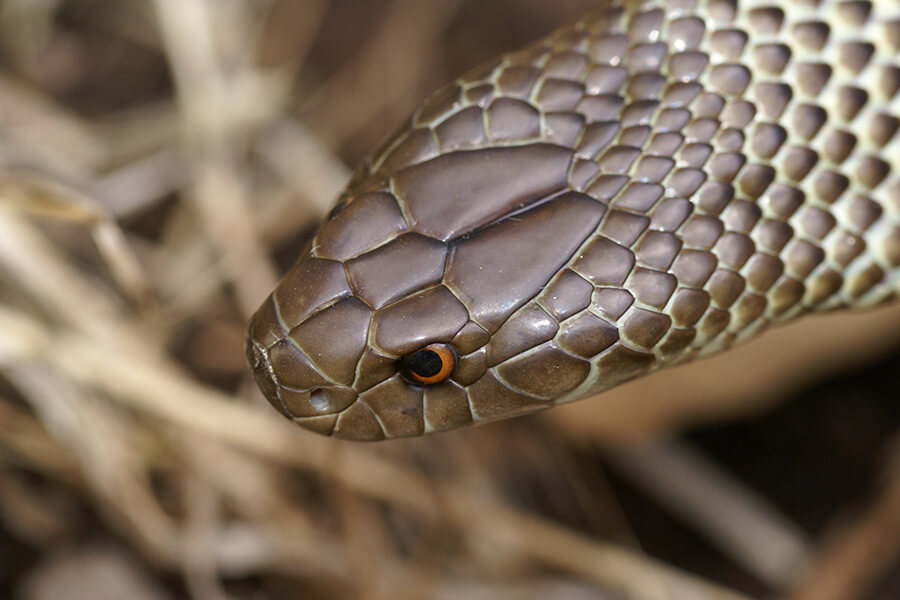Introduction
When it pertains to venomous serpents, Australia is home to several of the most remarkable and unsafe types worldwide. Amongst these, the Tiger Snake attracts attention not just for its potent poison yet additionally for its interesting habits. Recognizing the habits of venomous serpents like the Tiger Snake is crucial for both wildlife lovers and those staying in areas where these snakes are present. This write-up looks into various elements of Tiger Snake behavior, environment, recognition, safety measures, and emergency treatment methods in situation of a serpent bite.

Understanding the Habits of Venomous Snakes Like the Tiger Snake
The Tiger Snake, medically known as Notechis scutatus, Avoiding venomous snakes is infamous for its hostile nature when threatened. These snakes exhibit a variety of behaviors that can be quite different from their non-venomous counterparts.
Characteristics of Tiger Snakes
The Tiger Serpent is easily well-known due to its distinctive bands or stripes that resemble a tiger's markings. They can differ in color from yellowish-brown to dark olive or black. First aid for snake bite This pigmentation serves not only as camouflage yet additionally as a warning signal to potential predators.
Adaptability to Environment
One exceptional facet of their habits is their versatility to various atmospheres. Located mainly in seaside areas, marshes, and wetlands across Australia and Tasmania, they can prosper in diverse habitats including city areas.
Hunting Techniques
Tiger Snakes are ambush predators mostly feeding on fish, frogs, and tiny mammals. They possess eager vision and an acute feeling of scent which helps them in situating target effectively.
Venom Composition
Their venom contains neurotoxins that affect the nerves, bring about paralysis or death in smaller animals. For human beings, prompt medical attention is critical after a tiger snake bite as a result of its potentially deadly effects.

Natural Habitat of Tiger Snakes
Preferred Locations
Understanding where these snakes stay sheds light on their behavioral patterns. The tiger serpent habitat includes:
- Coastal regions Swamps Grasslands Urban areas with abundant water sources
Seasonal Movements
During warmer months, Tiger Snakes are a lot more active as they indulge in sunlight or hunt for food. On the other hand, colder months see them pulling back right into hibernation sites.
Are Tiger Snakes Venomous?
Yes! The concern "are tiger snakes venomous?" often emerges among those not familiar with this types. Their poison is taken into consideration one of the most dangerous among all serpent varieties worldwide.
Symptoms of a Tiger Snake Bite
If bitten by a tiger serpent, signs may include:
- Localized pain Swelling at the bite site Nausea and vomiting Sweating and confusion
Immediate medical aid is important as untreated bites can result in serious wellness problems and even death.
First Aid for Serpent Bites: Quick Reaction Guide
Knowing exactly how to provide emergency treatment for a serpent bite can save a person's life. Below's what you must do:
Step 1: Stay Calm
Keeping calm aids decrease heart rate which reduces poison spread.
Step 2: Debilitate the Influenced Area
Keep the affected limb still and below heart degree if possible.
Step 3: Call Emergency Services
Always look for specialist medical help quickly after a snake bite.
First Aid for Serpent Bite Kit Essentials
A well-equipped snake bite emergency treatment kit need to consist of:
- A compression bandage Antiseptic wipes A set of scissors An ice bag
Safety Preventative measures: Preventing Serpent Bites in Australia
Awareness Programs
Educating neighborhoods regarding local snake varieties and their actions can substantially lower experiences bring about bites.
Avoiding Dangerous Areas
Staying far from long turf during warmer months decreases call with serpents that could be Click here relaxing or hunting.
Common False impressions Concerning Tiger Snakes
Many individuals believe mistaken beliefs regarding the actions of tiger snakes bring about unnecessary fear. Below are some clarifications:
Myth 1: All Tigers Are Aggressive
Not all tiger serpents will certainly show aggression if left uninterrupted; lots of prefer running away as opposed to confrontation.
Myth 2: They Chase Humans
Tiger snakes do not proactively chase after people; they might strike when they feel threatened but will generally pull away if offered space.
Conservation Efforts Associated with Venomous Snakes
Conservation efforts concentrate on enlightening neighborhoods concerning securing neighborhood wildlife while lessening human-snake interactions.

Importance of Ecosystems
Understanding that venomous snakes play a vital role in preserving ecological balance aids foster recognition as opposed to fear towards them.
FAQs Concerning Tiger Snakes
What should I do if I encounter a tiger snake?- Maintain range and slowly back away without abrupt movements.
- While attacks aren't very common as a result of understanding initiatives, they still happen each year within Australia.
- Baby tiger serpents can deliver full doses of venom despite being smaller sized; therefore caution is suggested around them.
- They largely take in frogs, fish, small animals like rats, and various other reptiles.
- It's prohibited in most territories without proper licensing due to safety issues regarding their venom.
- Wear sturdy boots and remain on significant routes; appearance prior to putting hands or feet into hidden areas like rocks or logs.
Conclusion
Understanding the habits of poisonous serpents like the Tiger Serpent not just enhances our expertise however also advertises safety and security awareness among those living near their environments. From identifying their characteristics, understanding first aid methods following a bite, via engaging preservation initiatives-- every element plays an important duty in promoting coexistence with these remarkable reptiles while appreciating their location within our ecosystem.
As we deepen our understanding through education and learning and experience, we add positively towards ensuring both human security and wildlife preservation-- benefitting all events involved!